Dell S2417DG 24-inch 165Hz G-Sync Gaming Monitor Review
Why you can trust Tom's Hardware
Grayscale, Gamma & Color
Grayscale Tracking
Our grayscale and gamma tests are described in detail here.
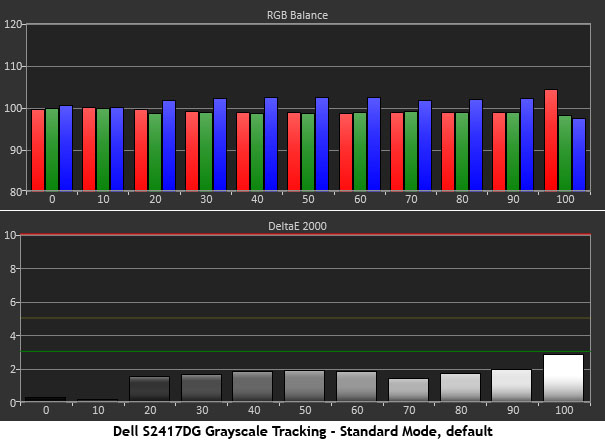
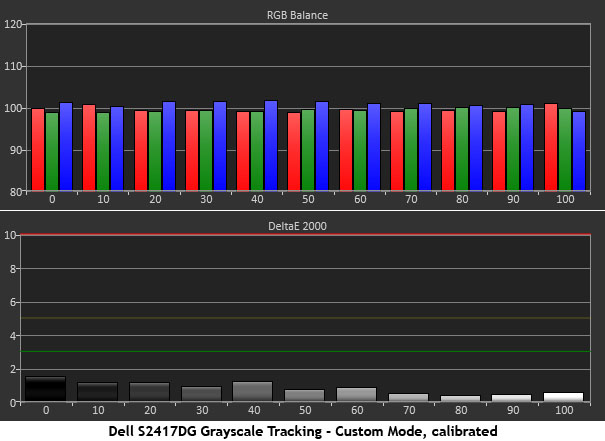
There aren’t too many choices to confuse matters here, so we’re showing you before and after charts. The first result represents the S2417DG’s Standard picture mode as delivered from the factory. There isn’t much need for calibration based on these measurements. Errors are all below the visible threshold.
We made a few small adjustments to the RGB sliders but most of our gains in the brighter steps came from reducing the Contrast slider from 75 to 68. That tells us the monitor’s default setting clips some high-end detail and also clips green and blue, as seen in the pre-calibration chart. As you’ll see below, gamma is the real issue that needs to be addressed.
Comparisons

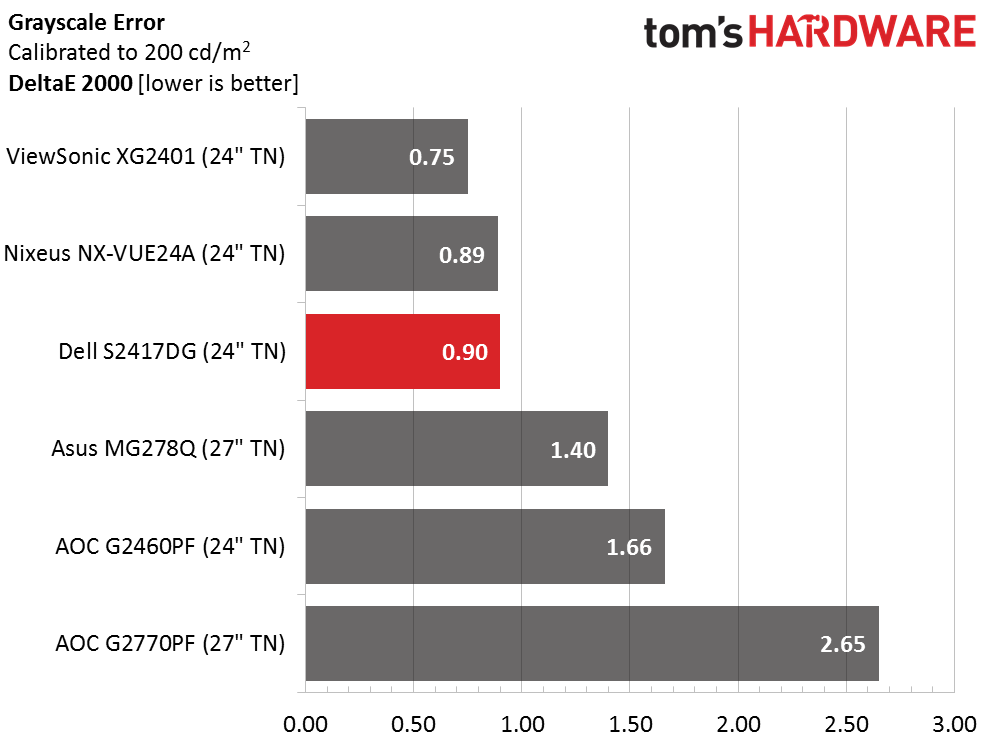
The S2417DG takes the top prize for out-of-box accuracy and narrowly misses the top spot after calibration. We’re glad to see this kind of attention to detail in a gaming monitor. This is a standard that should be met by every computer display, regardless of its price or intended use.
Gamma Response


Gamma is the only area where we had some concerns. The default trace rides close to 2.2 until things go south at the 60% mark. It’s solely due to a contrast control that’s set too high. If you do nothing else, please change that slider from 75 to 68 on your S2417DG. It will firm up grayscale accuracy in the brighter steps, and detail that was previously washed out will become visible. Even after calibration, this monitor’s gamma could be better. It’s a tad dark considering the contrast level. An additional preset in the OSD would be helpful here.
Comparisons
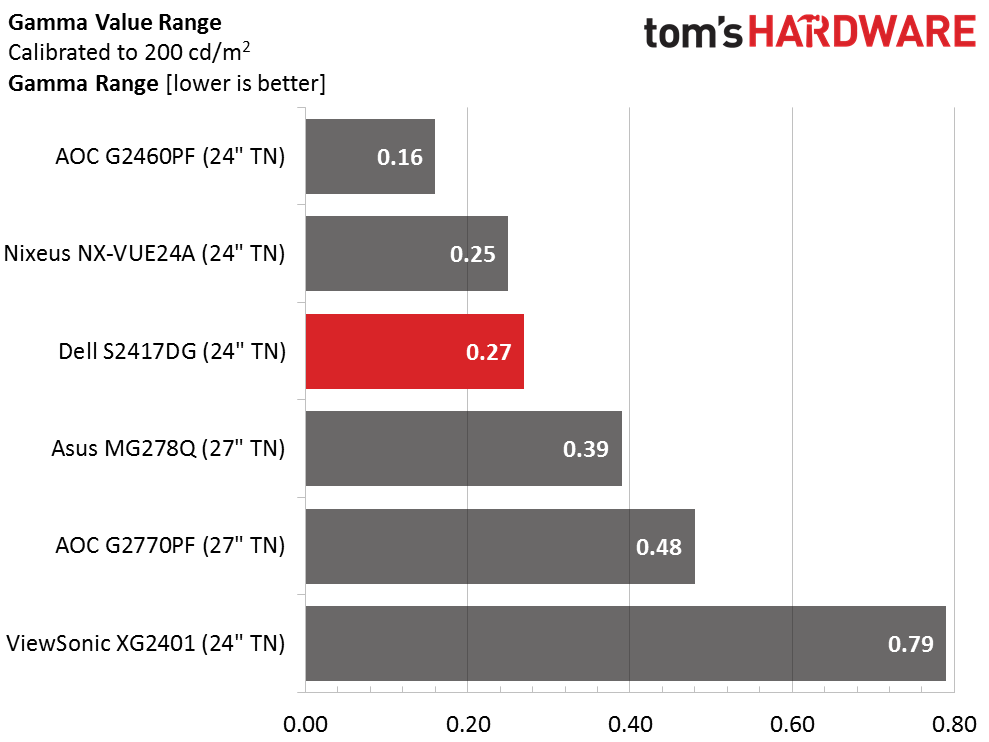
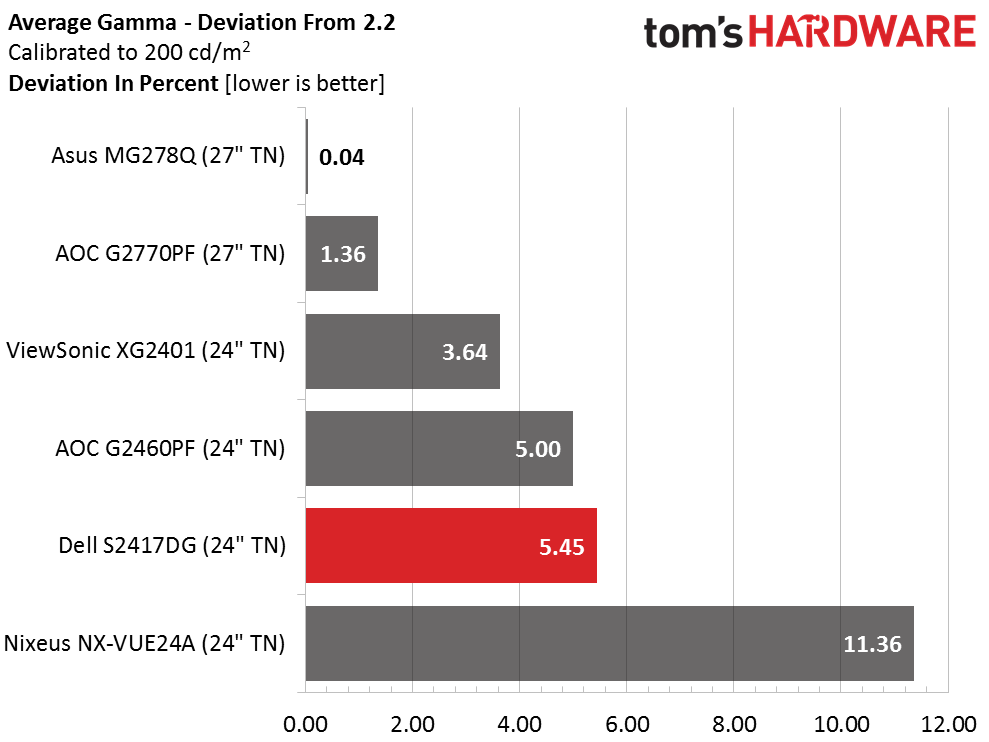
Post-calibration gamma tracking is fairly linear, which enables the S2417DG to finish third in our comparison. The overall value of 2.32 drops it down to fifth, however. It’s a small difference, but if the panel tracked at 2.2, the image would have a bit more pop, especially in the mid-brightness (30-60%) areas.
Color Gamut & Luminance
For details on our color gamut testing and volume calculations, please click here.
Get Tom's Hardware's best news and in-depth reviews, straight to your inbox.
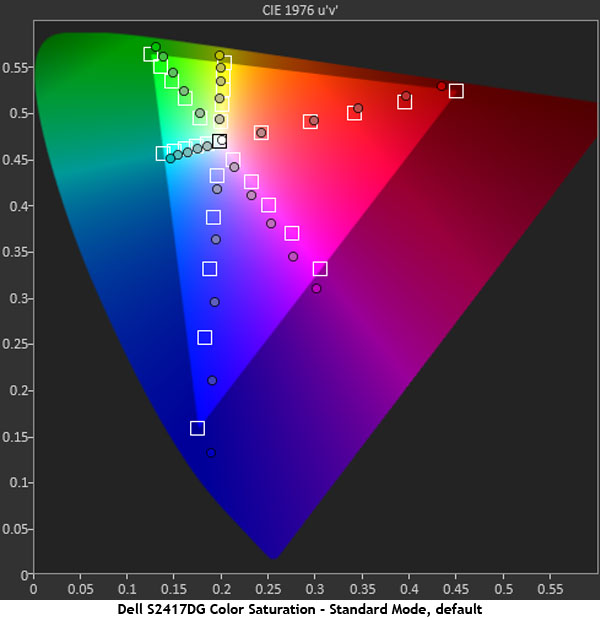
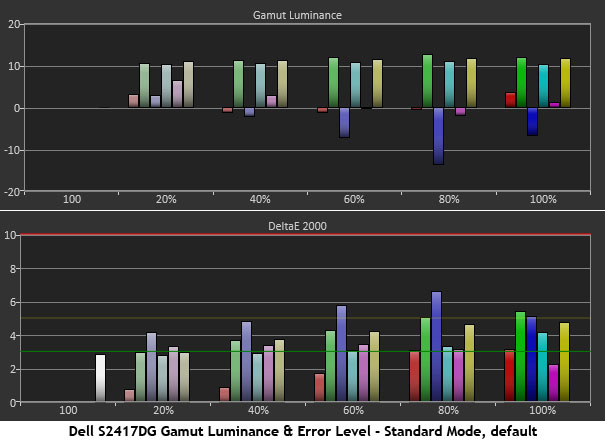
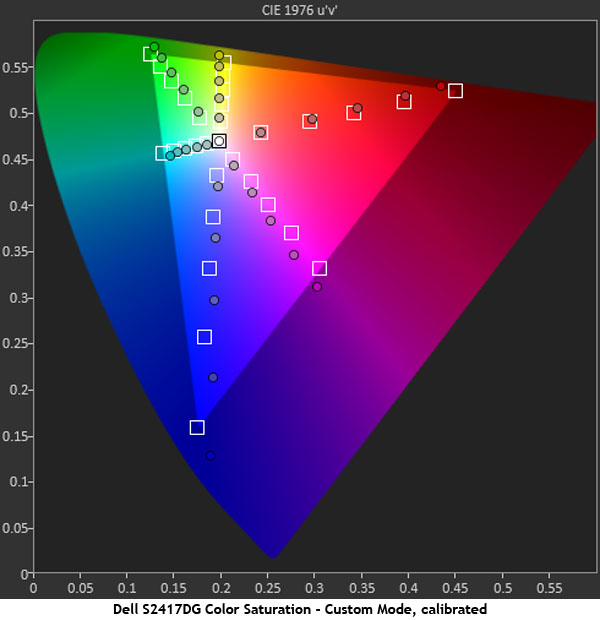
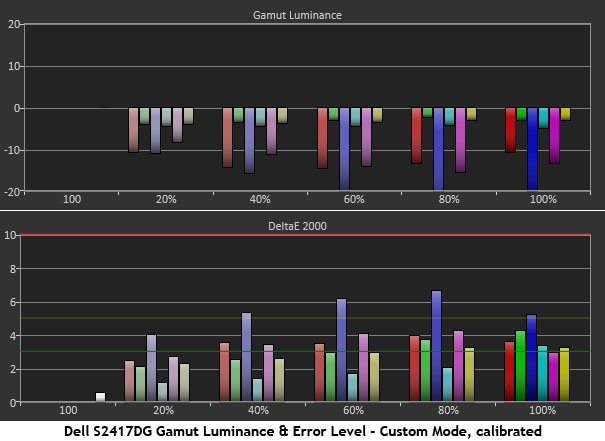
The S2417DG’s native color gamut shows a little under-saturation in red and a little over-saturation in blue. These are minor errors and they’re mostly compensated for by engineered tweaks to the color luminance levels.
Our calibration has almost zero effect on the saturation measurements, but the change in gamma has brought better balance to the luminance chart. We were not able to fix the hue error in magenta, but that is also very minor and does not detract from real-world image quality.
Comparisons
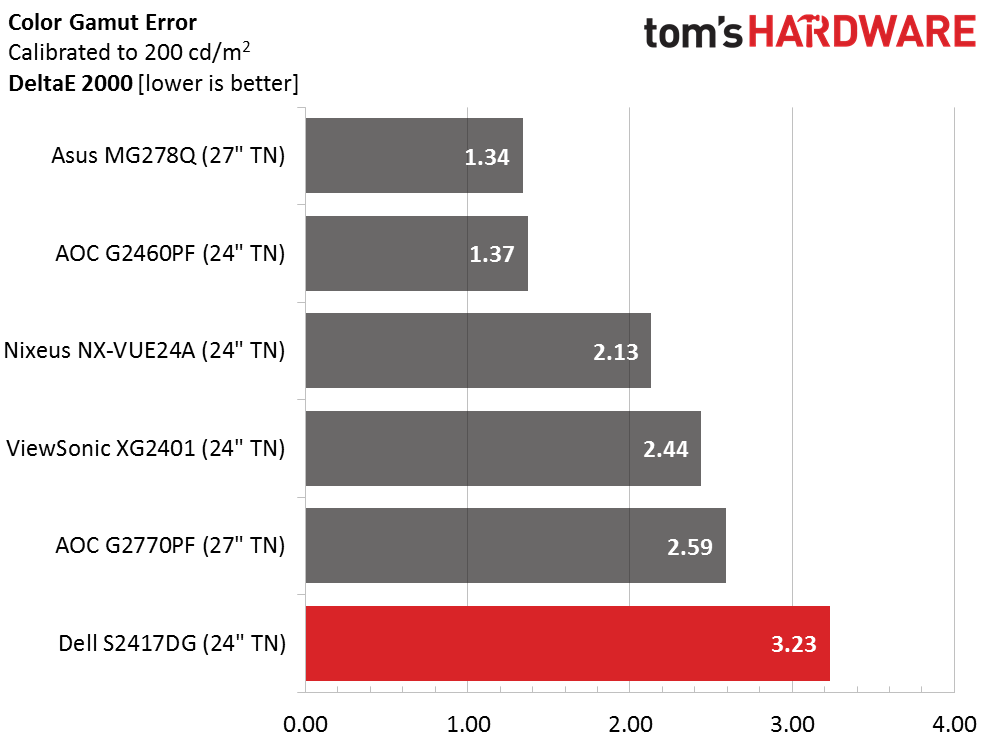
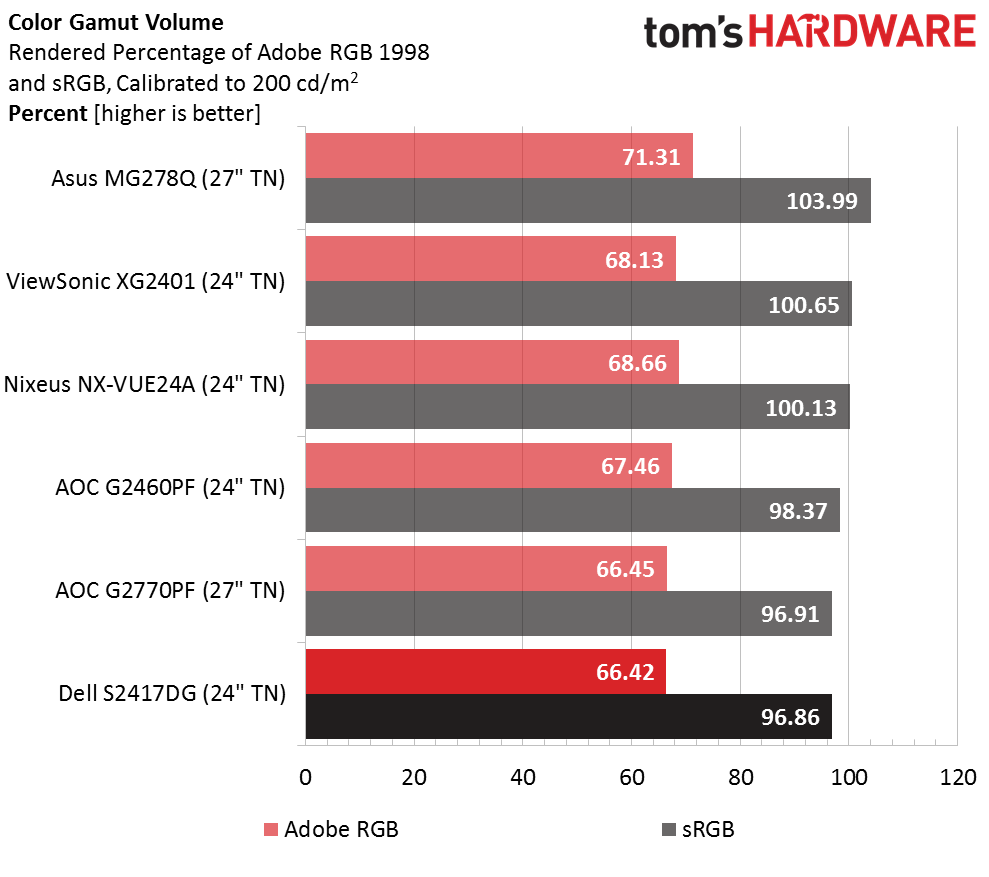
Calibration takes the average Delta E 2000 error from 3.65 to 3.23 which is an imperceptible change. We still feel that fixing the gamma is the most important takeaway from our adjustments. And you can realize the same gain by simply adjusting contrast as we did. While 3.23dE is acceptable for a gaming monitor, the other screens here perform a little better. There are other considerations in favor of the S2417DG, however. Read on.
Current page: Grayscale, Gamma & Color
Prev Page Brightness & Contrast Next Page Viewing Angles, Uniformity, Response, Lag, G-Sync, ULMB
Christian Eberle is a Contributing Editor for Tom's Hardware US. He's a veteran reviewer of A/V equipment, specializing in monitors. Christian began his obsession with tech when he built his first PC in 1991, a 286 running DOS 3.0 at a blazing 12MHz. In 2006, he undertook training from the Imaging Science Foundation in video calibration and testing and thus started a passion for precise imaging that persists to this day. He is also a professional musician with a degree from the New England Conservatory as a classical bassoonist which he used to good effect as a performer with the West Point Army Band from 1987 to 2013. He enjoys watching movies and listening to high-end audio in his custom-built home theater and can be seen riding trails near his home on a race-ready ICE VTX recumbent trike. Christian enjoys the endless summer in Florida where he lives with his wife and Chihuahua and plays with orchestras around the state.
-
Blair_1 It's a shame this monitor is so much more expensive in Canada, $739 CAD which is about $545 USD. That's not even including taxes :(Reply -
apertotes For the love of God, add contrast information to the chart in the first page. It's the single most important piece of data after the resolution.Reply -
Robert-Jan Does this kind of screen support Nvidia 3D Vision? The refreshrate is more than enough since 120hz sufffices......Reply -
heyhihowyadurrin Reply18861970 said:The refreshrate is more than enough since 120hz sufffices......
For you. Some people want more. Thats why BenQ is releasing 240hz monitors.
http://zowie.benq.com/en/product/monitor/xl/xl2540.html -
s4fun I never thought I would say this, but DO NOT buy Dell monitors especially of the current vintage. Dell's quality control has gone to hell. I had to buy 6 of the S2716DG the 27" version of this thing and return 5 of them just to get one without a bad pixel, or some other defect. If it weren't for Best Buy return policy I would have been SOL.Reply -
s4fun The bad ones have defects and failure modes of the follow:Reply
1. Bad pixels - usually pixel stays black or fails to get past dark gray
2. Buzzing Coil whine, some much louder than others
3. Backlight white is not always the same "white" and it differs from monitor to monitor, and changing the brightness setting does NOT equalize them. Some "white" looks more yellow than others, the variation is too wide for something that should be consistently manufactured.
4. Deep sleep failure mode 1: refuse to wake up
6. Deep sleep failure mode 2: refuse to go into deep sleep mode even with the setting enabled and sits and vampires 12 watts of power while supposedly in "off" state, screen is black.
5. Bezel plastic has rough cut unpolished edges but not always at the same spots. -
Nintendork What a piece of trash.Reply
Until OLED reigns supreme, we must only allow AMVA+ panels with 60-120-240Hz. TN looks like c*rap and IPS with the annoying IPS glow too. -
shrapnel_indie Reply18861849 said:For the love of God, add contrast information to the chart in the first page. It's the single most important piece of data after the resolution.
You don't really want MFR contrast info... only because, like TVs, it's MFR subjective. If TH or other testers have a specific test that uses the same criteria across all brands and models, then fine... it will actually be a comparable attribute. (Someone PLEASE correct me if I am wrong here.) -
-> TN panel, nearly 2017. As if there aren't a dozen or more G-Sync TN monitors already in all refresh rates and resolutions.Reply
What a waste. -
apertotes Reply18864998 said:18861849 said:For the love of God, add contrast information to the chart in the first page. It's the single most important piece of data after the resolution.
You don't really want MFR contrast info... only because, like TVs, it's MFR subjective. If TH or other testers have a specific test that uses the same criteria across all brands and models, then fine... it will actually be a comparable attribute. (Someone PLEASE correct me if I am wrong here.)
If they add Response time and Brightness, which manufacturers also lie about, I do not see why not add contrast too. We then have the actual review to see the real number, but at least, if the chart on first page says contrast 1000:1, we know that the actual contrast will be between 800:1 and 1100:1, and not 4000:1.